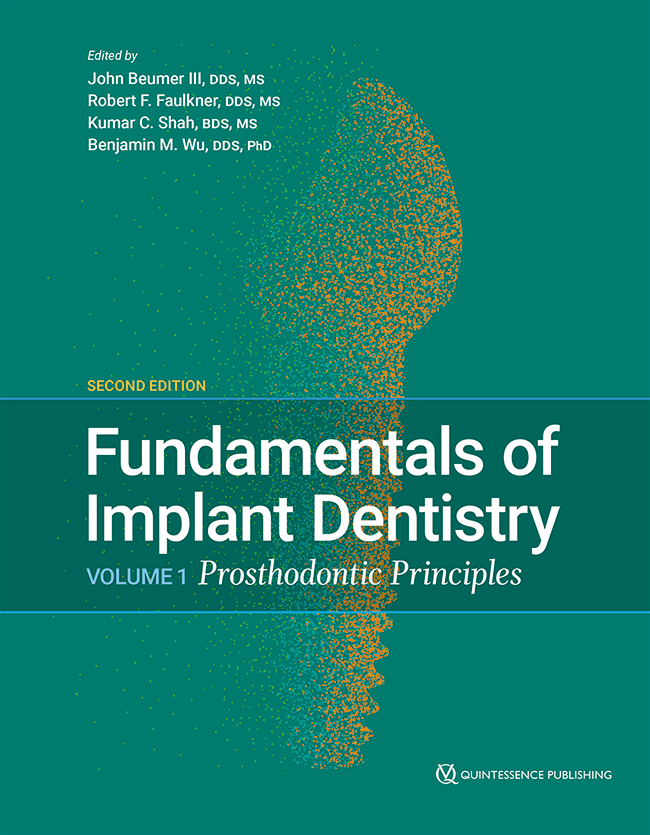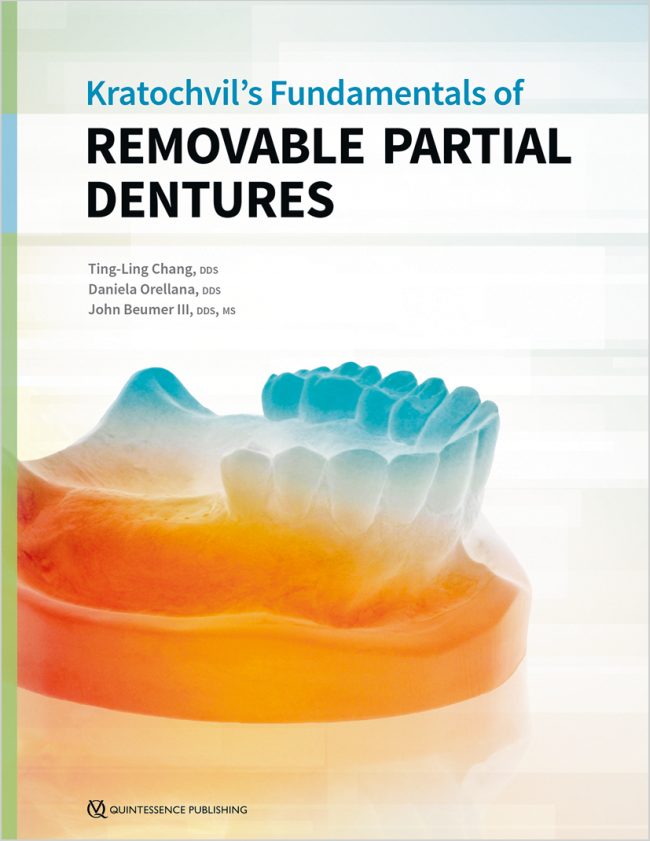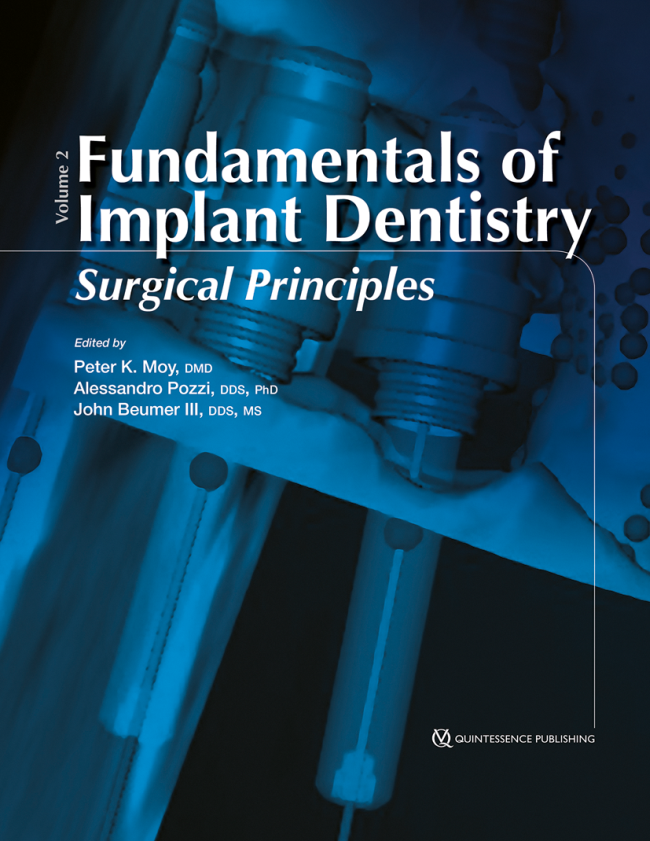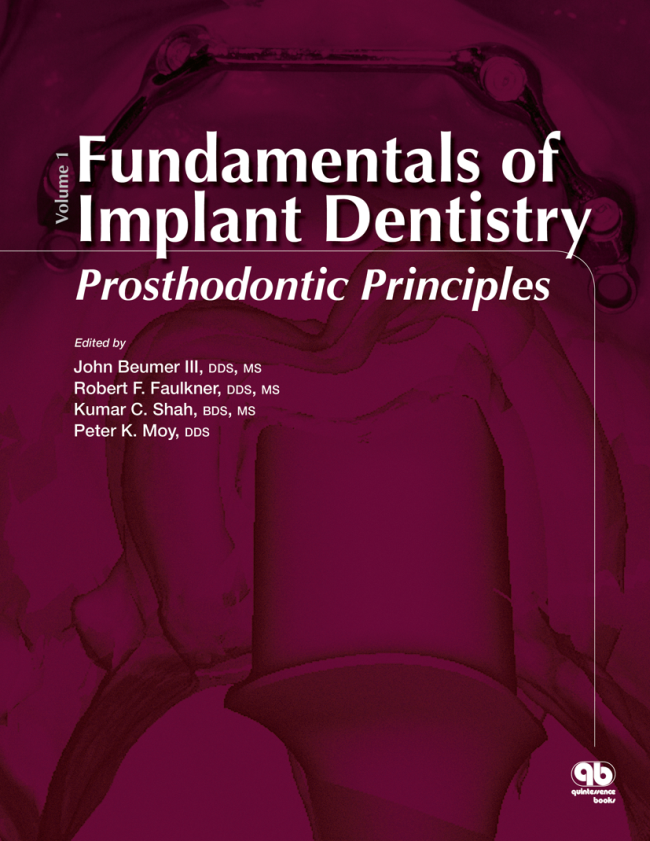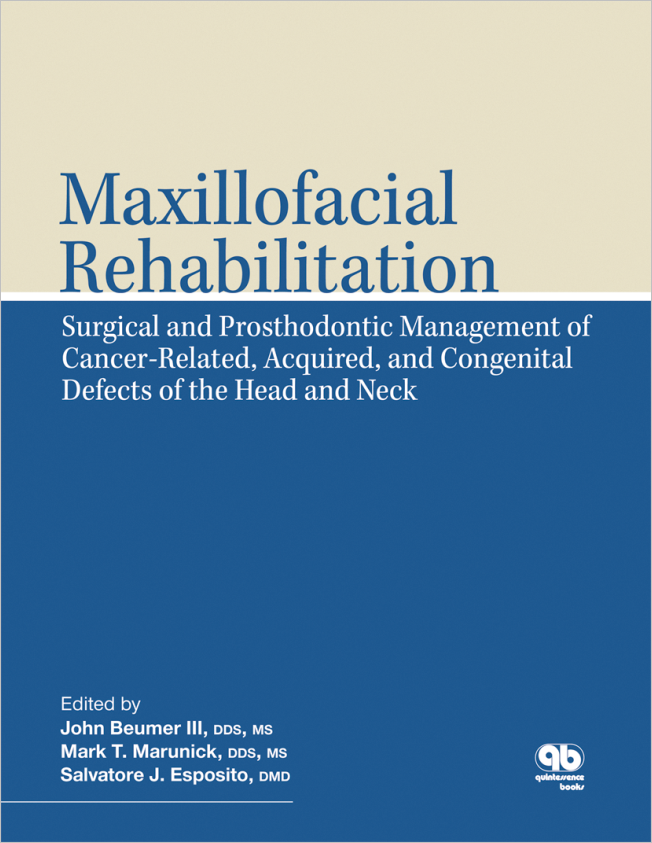Implantologie, 2/2007
Seiten: 179-193, Sprache: DeutschWeinländer, Michael / Beumer III, John / Kenney, E. Barrie / Leković, Vojislav / Holmes, Ralph / Moy, Peter K. / Plenk, HannsDas Ziel der Studie bestand darin, den Einfluss von therapeutischer Bestrahlung auf die Knochenheilung im Bereich von drei enossalen Implantattypen bei Hunden zu untersuchen. Bei insgesamt sieben Hunden wurden zunächst alle Zähne aus dem rechten Unterkieferseitenbereich entfernt. Danach wurde dieser Bereich mit Implantaten versorgt, die unterschiedliche Oberflächen aufwiesen (Typ A = maschinengeglättete Schrauben aus handelsüblichem Reintitan, Typ B = Zylinder aus handelsüblichem Reintitan mit Titanplasmabeschichtung und Typ C = Zylinder aus handelsüblichem Reintitan mit Hydroxylapatitbeschichtung). Nach zwölf Wochen ohne funktionelle Belastung und nach Fluorchrom-Sequenzmarkierung wurden die Implantate durch Blockbiopsien gewonnen. Beim selben Eingriff wurde die andere Kieferhälfte, aus der die Zähne ebenfalls entfernt worden waren, mit Implantaten versorgt. Drei Wochen nach dieser Implantation wurden die implantierten Unterkieferhälften mit Kobalt 60 (biologisches Äquivalent von 5.000 cGy) therapeutisch bestrahlt. Zwölf Wochen nach der Implantation wurden die Tiere eingeschläfert und Blockpräparate von den bestrahlten Implantaten gewonnen. Die unentkalkten Längsschliffpräparate der Implantate mit den umgebenden Geweben wurden rasterelektronen-, licht- und fluoreszenzmikroskopisch untersucht. Der prozentuale Knochen-Implantat-Kontakt (%BIC) sowie Knochenbildung und -umbau wurden histomorphometrisch und subjektiv ausgewertet. Eine Woche nach der Implantation begann sich im Implantatlager in den bestrahlten und nichtbestrahlten Kieferhälften Geflechtknochen zu bilden. Der durchschnittliche Knochen-Implantat-Kontakt (Gesamtknochen/Kortikalis/Spongiosa) betrug 26 % / 49 % /36 % für die Oberfläche vom Typ A, 46 % / 48 % / 64 % für die Oberfläche vom Typ B und 81 % / 83 % / 78 % für die Oberfläche vom Typ C. In den bestrahlten Kieferhälften waren diese Werte auf 11 % / 9 % / 4 % (Oberfläche Typ A), 43 % / 46 % / 43 % (Oberfläche Typ B) und 63 % / 85 % / 76 % (Oberfläche Typ C) reduziert, wobei nach der Bestrahlung eine verstärkte Resorption des periimplantären Knochens und eine verzögerte Knochenneubildung festzustellen waren. Die Reduktionen des gesamten %BIC waren bei allen bestrahlten Implantaten zwar nicht statistisch signifikant, wohl aber auf den Implantatoberflächen vom Typ A und B gegenüber Typ C im spongiösen Knochenlager (p = 0,05). Diese verzögerte Knochenbildung an den Implantatoberflächen A und B repräsentiert eine erhöhte Strahlenanfälligkeit im spongiösen Knochenlager zu Beginn einer Strahlentherapie im Vergleich zu den Implantatoberflächen vom Typ C, bei denen die Knochenneubildung frühzeitiger und die Knochenreifung bereits fortgeschrittener war.
Schlagwörter: Knochen-Implantat-Kontakt, Histomorphometrie, Implantatoberflächen, Bestrahlung
The International Journal of Oral & Maxillofacial Implants, 2/2006
PubMed-ID: 16634491Seiten: 212-224, Sprache: EnglischWeinlaender, Michael / Beumer III, John / Kenney, E. Barrie / Lekovic, Vojislav / Holmes, Ralph E. / Moy, Peter K. / Plenk jr., HannsPurpose: Radiation therapy influence on bone healing around 3 types of endosseous dental implants in dogs was evaluated. materials and methods: Implants with 3 different surfaces (A = machined commercially pure titanium screws, B = commercially pure titanium plasma spray-coated cylinders, C = hydroxyapatite [HA] -ceramic coated cylinders) were first implanted unilaterally into the right posterior edentulous mandibles of 7 dogs as nonirradiated controls. After 12 weeks without functional loading and after sequential fluorochrome labeling these implants were retrieved by block dissection. In this same surgery, implants were placed on the contralateral side. Three weeks postimplantation the implant-containing hemimandibles were Cobalt 60 irradiated with the biologic equivalent of 5,000 cGy. Twelve weeks postimplantation and after labeling these irradiated implants were retrieved at sacrifice. On scanning electron, light, and fluorescence microscopic images of undecalcified longitudinal ground sections of the implants with surrounding tissues, percent bone-to-implant contact (% BIC), bone formation, and remodeling were histometrically and subjectively evaluated.
Results: Woven bone formation started 1 week after implantation at the implant interfaces on both the nonirradiated and the irradiated sides. Average BICs (total/cortical/spongious bone bed) of 26%/49%/36% for surface A, 46%/48%/64% for surface B, and 81%/83%/78% for surface C were observed. In the irradiated hemimandibles average BICs (total/cortical/spongious bone bed) were reduced to 11%/9%/4% for surface A, 43%/46%/43% for surface B, and 63%/85%/76% for surface C, with increased resorption of peri-implant bone and retarded bone formation after irradiation.
Discussion: Reductions of total % BIC in all irradiated implants, though not statistically significant, were significant (P = .05) on implant surfaces A and B in the spongious bone bed.
Conclusion: Retarded bone formation on surfaces A and B in the spongious bone bed represented a more radiation-sensitive situation at the time of radiation onset compared to advanced bone formation and maturation at surface C.
Schlagwörter: bone-implant contact, histomorphometry, implant surfaces, radiation
The International Journal of Oral & Maxillofacial Implants, 5/1994
Seiten: 579-585, Sprache: EnglischRoumanas, Eleni / Nishimura, Russell / Beumer III, John / Moy, Peter / Weinlander, Michael / Lorant, JohnThis report is based upon 6 years of experience with craniofacial implants used for the retention of maxillofacial prostheses. A total of 30 patients were treated with 92 implants. Of these implants, 86 were uncovered, 8 were subsequently buried because of persistent soft tissue problems, and 15 failed to achieve or maintain osseointegration. The overall success rate was 73.3% and varied according to implant location and radiation status. The temporal bone was the most reliable site (92.5%), followed by the nasal floor (72.2%), and lastly the orbit (65.0%). Most notably, the success rate for the irradiated orbital group was a low 58.3%.
Schlagwörter: craniofacial implants, osseointegration
The International Journal of Oral & Maxillofacial Implants, 4/1992
Seiten: 491-496, Sprache: EnglischWeinlaender, Michael / Kenney, Ernest Barrie / Lekovic, Voja / Beumer III, John / Moy, Peter K. / Lewis, StevenThree different types of commercially available dental implants (Nobelpharma, IMZ, and Integral) were implanted in the edentulous mandibles of seven adult mongrel dogs. Twenty-one implants were harvested with block sections after 12 weeks and embedded in polymethyl methacrylate resin. Undecalcified sections were prepared with the sectioning-grinding technique. The percentage of bone contacting the implant surface was measured with a self-designed histomorphometry method using a millimeter grid in a stereomicroscope. The results demonstrated a significantly higher percentage of bone along the hydroxyapatite-coated implant than that seen with the titanium-surfaced implant types.
Schlagwörter: experimental study, histomorphometry implant surface, machined commercially pure titanium, plasma flame-sprayed hydroxyapatite, plasma flame-sprayed titanium
The International Journal of Oral & Maxillofacial Implants, 1/1988
Seiten: 25-30, Sprache: EnglischLewis, Steven G. / Beumer III, John / Perri, George R. / Hornburg, Wynn P.Single tooth implant supported restorations present a difficult restorative challenge. This article describes a new technique for fabricating single tooth restorations directly to Brånemark implant fixtures, bypassing the titanium abutment cylinder. With the use of the UCLA abutment, this procedure can provide esthetic and functional restorations.
Schlagwörter: abutment cylinder, hexagon, UCLA abutment




